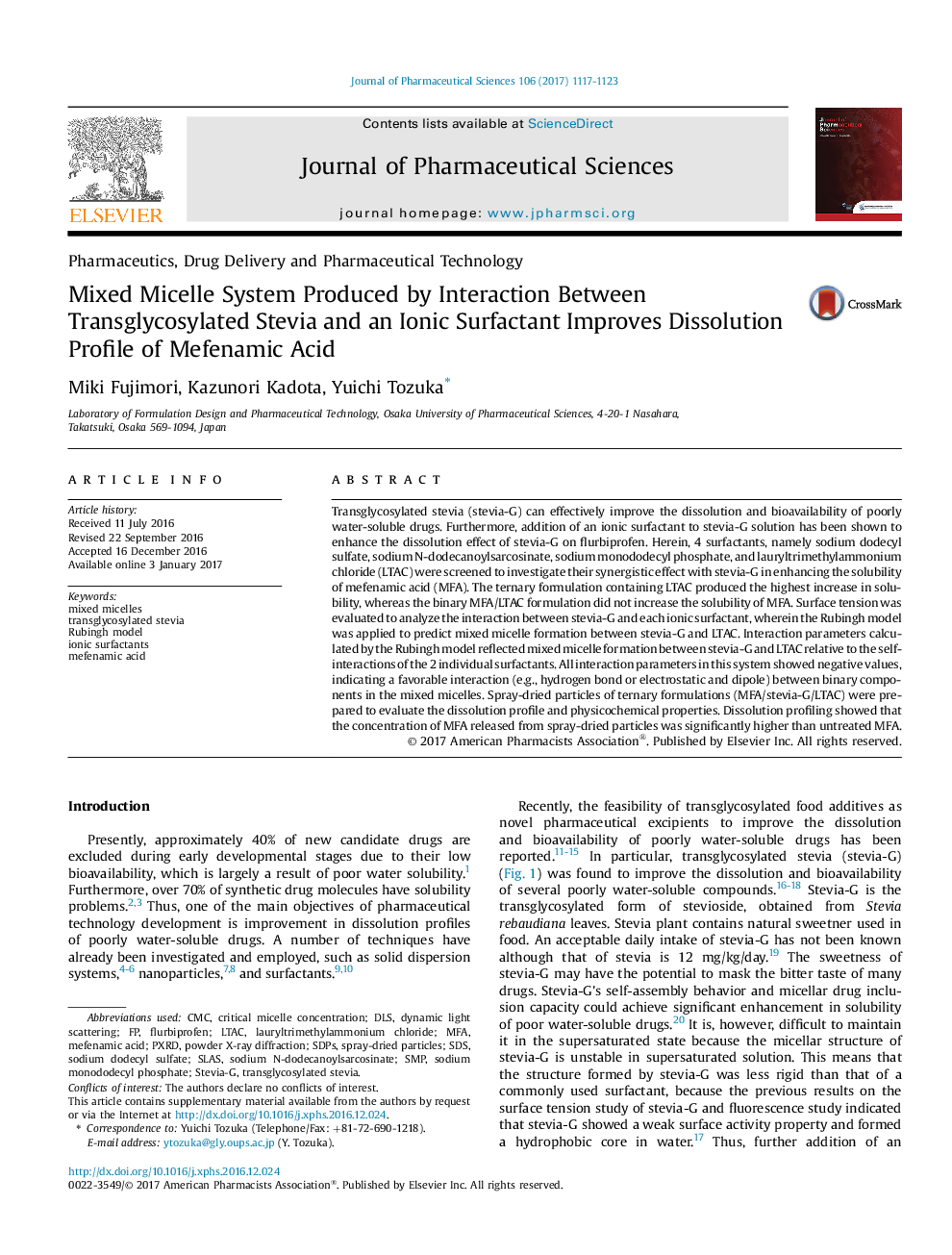| Article ID | Journal | Published Year | Pages | File Type |
|---|---|---|---|---|
| 8514342 | Journal of Pharmaceutical Sciences | 2017 | 7 Pages |
Abstract
Transglycosylated stevia (stevia-G) can effectively improve the dissolution and bioavailability of poorly water-soluble drugs. Furthermore, addition of an ionic surfactant to stevia-G solution has been shown to enhance the dissolution effect of stevia-G on flurbiprofen. Herein, 4 surfactants, namely sodium dodecyl sulfate, sodium N-dodecanoylsarcosinate, sodium monododecyl phosphate, and lauryltrimethylammonium chloride (LTAC) were screened to investigate their synergistic effect with stevia-G in enhancing the solubility of mefenamic acid (MFA). The ternary formulation containing LTAC produced the highest increase in solubility, whereas the binary MFA/LTAC formulation did not increase the solubility of MFA. Surface tension was evaluated to analyze the interaction between stevia-G and each ionic surfactant, wherein the Rubingh model was applied to predict mixed micelle formation between stevia-G and LTAC. Interaction parameters calculated by the Rubingh model reflected mixed micelle formation between stevia-G and LTAC relative to the self-interactions of the 2 individual surfactants. All interaction parameters in this system showed negative values, indicating a favorable interaction (e.g., hydrogen bond or electrostatic and dipole) between binary components in the mixed micelles. Spray-dried particles of ternary formulations (MFA/stevia-G/LTAC) were prepared to evaluate the dissolution profile and physicochemical properties. Dissolution profiling showed that the concentration of MFA released from spray-dried particles was significantly higher than untreated MFA.
Keywords
Related Topics
Health Sciences
Pharmacology, Toxicology and Pharmaceutical Science
Drug Discovery
Authors
Miki Fujimori, Kazunori Kadota, Yuichi Tozuka,
